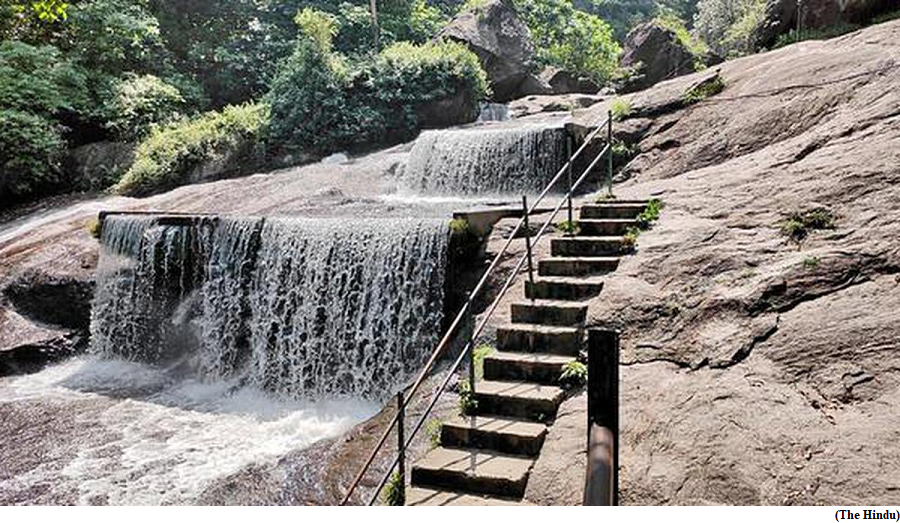India’s first national water body census (GS Paper 3, Environment)

Why in news?
- The findings of the first-ever water body census, conducted by the Ministry of Jal Shakti, was published recently.
Why is a water body census necessary?
- India is facing a water crisis with groundwater decline, biodiversity loss, and climate change increasing the frequency of floods and droughts. In this context, water bodies are important. They buffer against climate variability, holding flood waters for use in dry periods.
- They contribute to food and water security as well as livelihoods by recharging groundwater and providing water for irrigation and livestock. They also have cultural and ecological significance.
- However, water bodies are increasingly under threat from pollution, encroachment, urbanisation, and drying. If they are to be conserved and managed effectively, we need action plans which require baseline data.
- As water bodies are managed by different agencies from State to local to private entities, the data must be uniform and easily accessible. To actually manage water bodies, we need contextual and traditional knowledge of communities which are to be integrated with formal data.
How was the census conducted?
- The census’s objective was to develop a national database with information on the size, purpose, ownership, status, and conditions of water bodies. It covered all natural and human-made units bounded on all sides for storing water, irrespective of condition or use.
- A software for data entry and a mobile app for capturing the location and visual of the water bodies were developed, and data-processing workshops were conducted to train the surveyors in all States and Union territories.
- The census was built on existing and publicly available satellite-derived datasets. These datasets are extremely rich, allowing citizens to hone in on a specific village and download the historical time series data on each water body.
- However, they only include attributes that can be observed from space. The water body census thus, extends this to social characteristics including ownership, use and condition.
What does the data show?
- Most water bodies in the country are very small; the vast majority of India’s water bodies are less than one hectare (ha) large. This means locating and keeping track of them is likely to remain a challenge. The traditional way to map these water bodies, using satellites, may not work, which is why the mammoth effort expended in ground-based tracking is very welcome.
- The water bodies show regional patterns that correlate with rainfall in general, in drier States like Gujarat, Maharashtra, and Rajasthan, water bodies tend to be larger and publicly held. In the wetter parts of the country, like Kerala, West Bengal, and States in the northeast, more than three-quarters of the water bodies are privately owned.
- In drier States, the water bodies are primarily used for irrigation and groundwater recharge while in wetter States, domestic use and pisciculture dominate. Mid-sized water bodies are largely panchayat-owned.
- Most water bodies have never been repaired or rejuvenated, several water bodies were classified “not in use”, meaning despite the recent interest in rejuvenating water bodies, most of them have never been repaired or revived.
How can the census improve?
Gaps:
- The report itself noted in its preamble that water bodies “support healthy ecosystems”, yet the focus was exclusively on human use, which means only pisciculture or fish farming, which is seeded and does not reflect natural biodiversity.
- In classifying water bodies in terms of reasons of abandonment or disuse, “others” emerged as a significant reason, on par with “drying up” in a few States, but far ahead of other specific categories such as industrial pollution, construction, and salinity.
- One possibility is that the census questionnaire may have left out the most common reasons like eutrophication, sewage pollution, and solid waste dumping.
Inconsistencies:
- The census groups water bodies into five types: ponds, tanks, lakes, reservoirs, and water conservation schemes. Its glossary defines a pond as a smaller water body than a tank, while “water conservation structures” might include check dams and percolation tanks.
- However, these categories are not mutually exclusive; many tanks that were traditionally used directly for irrigation serve primarily as recharge structures today.
- Based on the data, it appears that in Karnataka, these were classified as ponds and tanks serving the purpose of irrigation, whereas in Maharashtra these were classified as water conservation structures, primarily serving the purpose of groundwater recharge. The sources of irrigation statistics for the two States suggest neither State has much tank irrigation.
Lack of standardised data:
- Some States like Gujarat do not show any water bodies not being in use, whereas Karnataka reports almost 80% of its water bodies as being in a state of disuse. This suggests differences in interpretation by the enumerators.
- There are some other concerns as well. For example, the map for north Karnataka seems suspiciously empty. Since the original geotagged data does not seem to have been made available yet, it is unclear if some districts were skipped or if they genuinely had a lower water-body density.
Way Forward:
- Notwithstanding these shortcomings, it is crucial that the government continue such nationwide censuses of a vital resource, with modifications.
- This first edition itself provides high-level indications on the way forward by detailing ownership, state of use, and the costs of construction and repair.
- If such censuses are conducted every five or 10 years, over time, they will accurately represent emerging trends and the state of water in the country as a whole.


